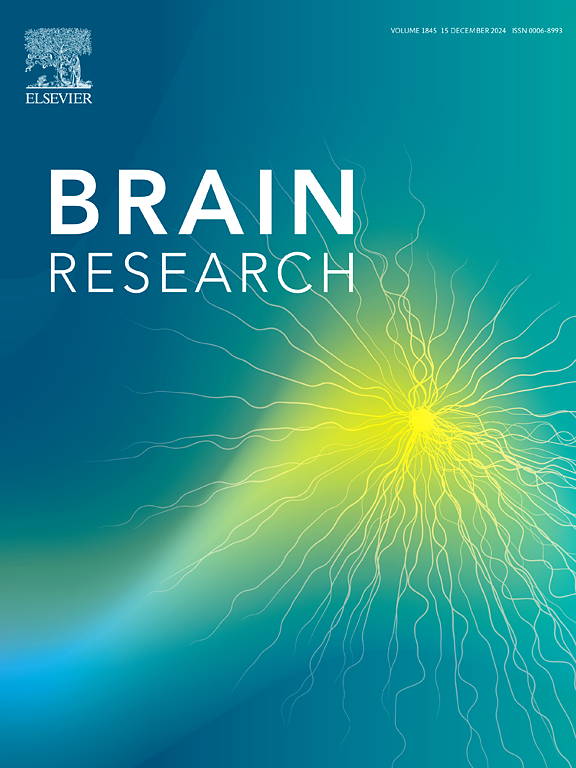经颅直流电刺激结合同步双任务行走对活动能力、步态和认知结果的影响:系统综述。
IF 2.7
4区 医学
Q3 NEUROSCIENCES
引用次数: 0
摘要
简介各种人群要成功完成正常活动,就必须完成双重任务(DTs)。双重任务涉及运动和认知任务,涉及多个脑区。经颅直流电刺激(tDCS)已被用于调节大脑皮层区域的兴奋性。本综述旨在评估经颅直流电刺激(tDCS)结合同期 DT 步行对患有或未患有帕金森病(PD)的老年人(OAs)的行动能力、步态和认知能力的影响的现有科学证据:方法:在 PubMed、PEDro、Cochrane 图书馆、Embase 和 Web 科学数据库中检索从开始至今发表的相关文章。检索到的随机对照试验分别使用 PEDro 量表和 Cochrane 偏倚风险工具对其方法学质量和偏倚风险进行了评估。采用定性和定量综合方法对数据进行分析:综述共纳入了五项研究。结果显示,在帕金森病患者中,主动 tDCS 并发 DT 步行更有可能显著改善 DT 对步速的代价(p 计数(p = 0.004)。同时使用 tDCS 的 DT 步行有可能明显改善 DT[步速计数(p = 0.03)、步幅(p = 0.0005)、双肢支撑时间(DBST)(p 结论:tDCS 与 DT 步行的结合可明显改善 DT[步速计数(p = 0.03)、步幅(p = 0.0005)、双肢支撑时间(DBST)]:无论是否患有帕金森氏病,tDCS与同时进行的DT行走或训练相结合,对患有或不患有帕金森氏病的OA患者的认知、步态和活动能力的影响都能通过DTW训练本身得到更好的解释。不过,tDCS 可在特定结果和场景中产生一些特殊效果。本文章由计算机程序翻译,如有差异,请以英文原文为准。
Effects of transcranial direct current stimulation combined with concurrent dual-task walking on mobility, gait, and cognitive outcomes: A systematic review
Introduction
Successful execution of normal activities in various populations warrants the performance of dual tasks (DTs). DTs involve motor and cognitive tasking with the involvement of various brain areas. Transcranial direct current stimulation (tDCS) has been used for regulating the excitability of brain cortical regions. The purpose of this review was to evaluate the available scientific evidence on the effects of tDCS combined with concurrent DT walking on mobility, gait and cognition in older adults (OAs) with and without Parkinson’s disease (PD).
Methods
The PubMed, PEDro, Cochrane Library, Embase and Web databases of Science were searched for relevant articles published from their beginning until date. Randomized controlled trials were retrieved, and their methodological quality and risk of bias were evaluated using the PEDro scale and the Cochrane risk-of-bias tool respectively. Qualitative and quantitative synthesis were used to analyze the data.
Results
Five studies were included in the review. The results revealed that in individuals with PD, active tDCS with concurrent DT walking has more potential to significantly improve DT cost to gait speed (p < 0.05), and the proportion of correct responses during DT time up and go test (TUG)count (p = 0.004). DT walking with concurrent tDCS has potential to significantly improve DT [gait speed count (p = 0.03), cadence (p = 0.0005), double limb support time (DBST) (p < 0.0001), and single-task (ST) cadence (p = 0.008)]. Significant improvements were observed in the DT costs for stride time (p < 0.0001), DBST (p = 0.03), stride time variability (p < 0.00001), and swing time variability (p = 0.002) with the active tDCS combined with concurrent DT training in OAs.
Conclusions
The effects of tDCS combined with concurrent DT walking or training on cognitive, gait and mobility outcomes in OAs with or without PD can be better explained by the DTW training itself. However, tDCS could produce some specific effects in particular outcomes and scenarios.
求助全文
通过发布文献求助,成功后即可免费获取论文全文。
去求助
来源期刊

Brain Research
医学-神经科学
CiteScore
5.90
自引率
3.40%
发文量
268
审稿时长
47 days
期刊介绍:
An international multidisciplinary journal devoted to fundamental research in the brain sciences.
Brain Research publishes papers reporting interdisciplinary investigations of nervous system structure and function that are of general interest to the international community of neuroscientists. As is evident from the journals name, its scope is broad, ranging from cellular and molecular studies through systems neuroscience, cognition and disease. Invited reviews are also published; suggestions for and inquiries about potential reviews are welcomed.
With the appearance of the final issue of the 2011 subscription, Vol. 67/1-2 (24 June 2011), Brain Research Reviews has ceased publication as a distinct journal separate from Brain Research. Review articles accepted for Brain Research are now published in that journal.
 求助内容:
求助内容: 应助结果提醒方式:
应助结果提醒方式:


